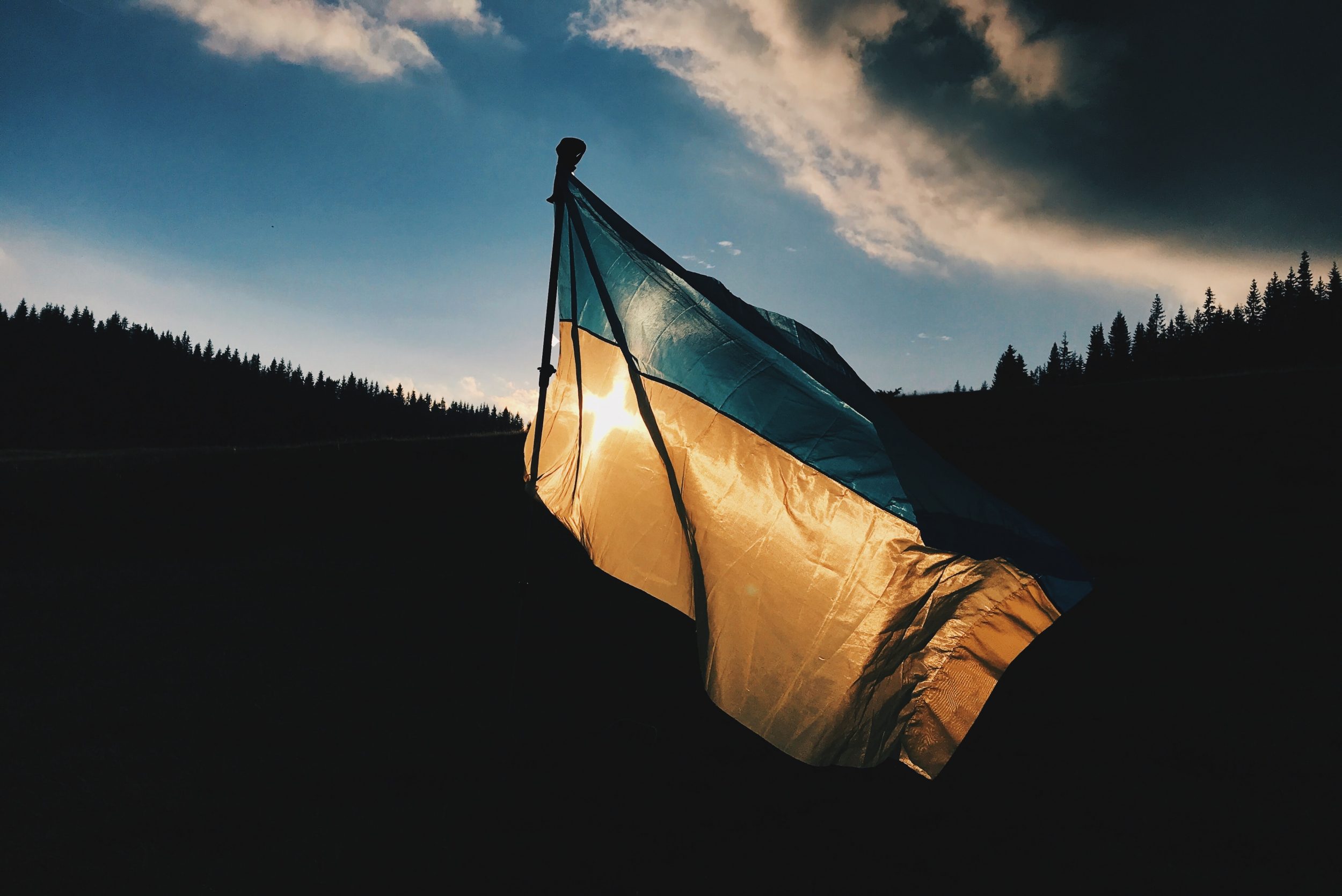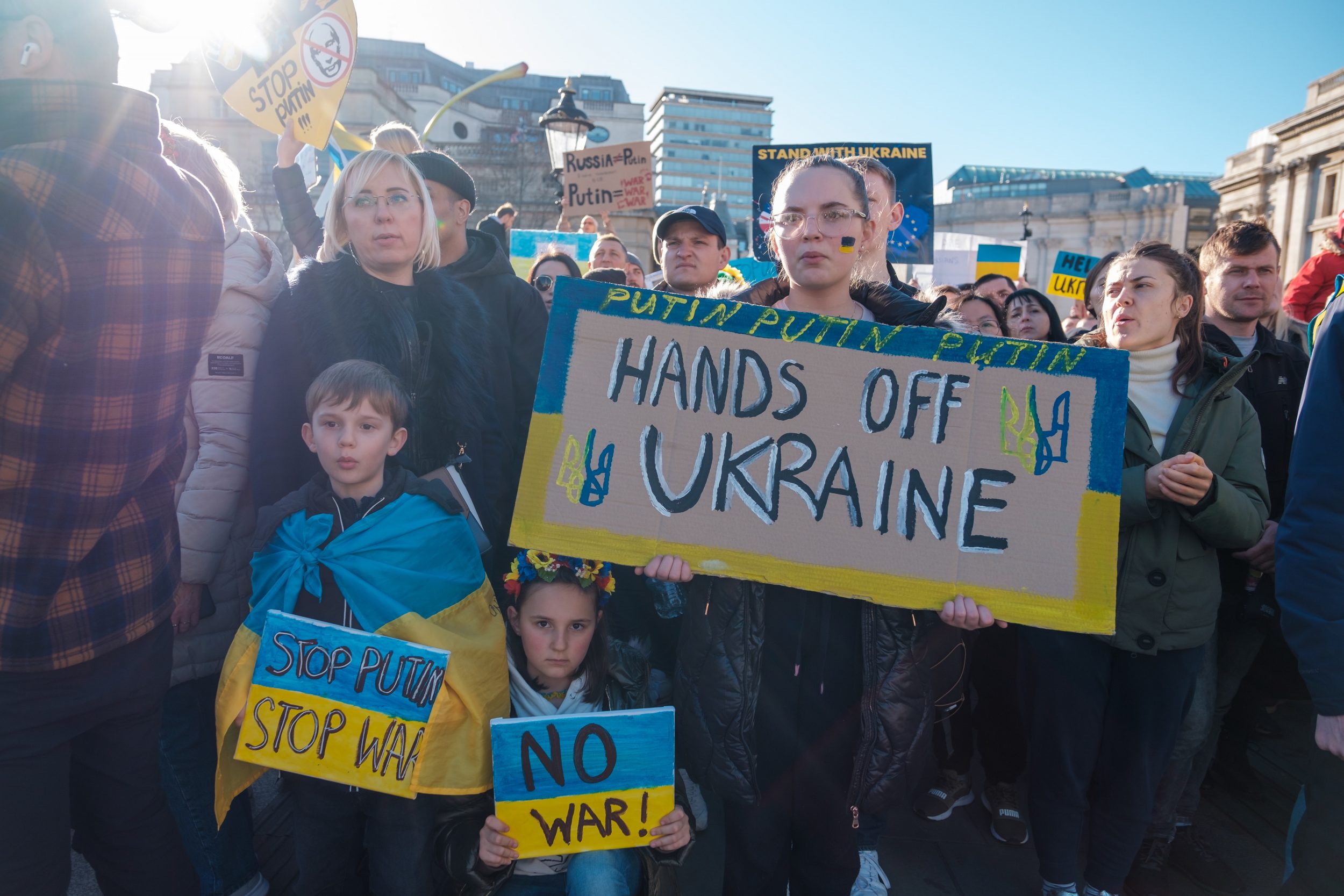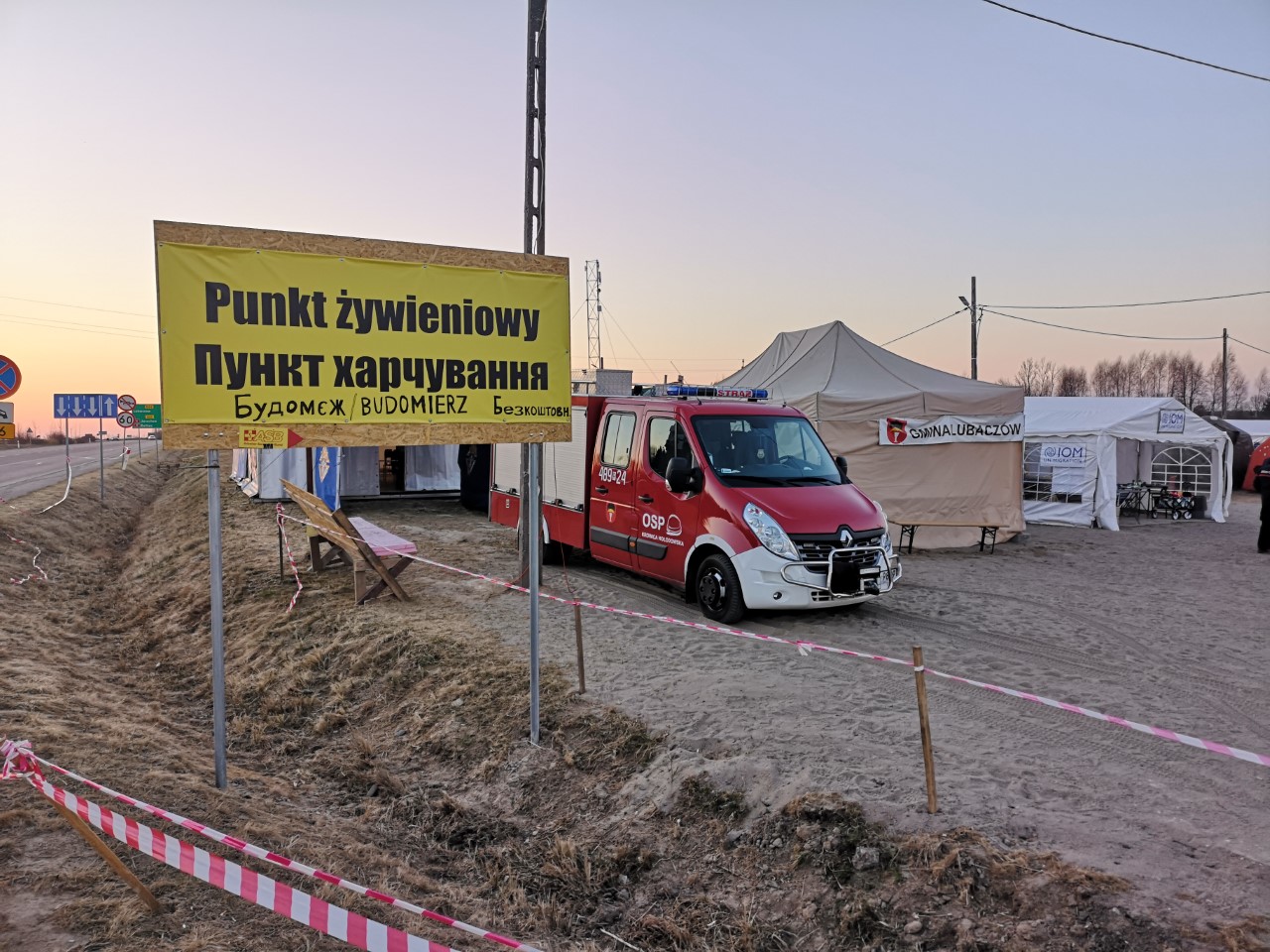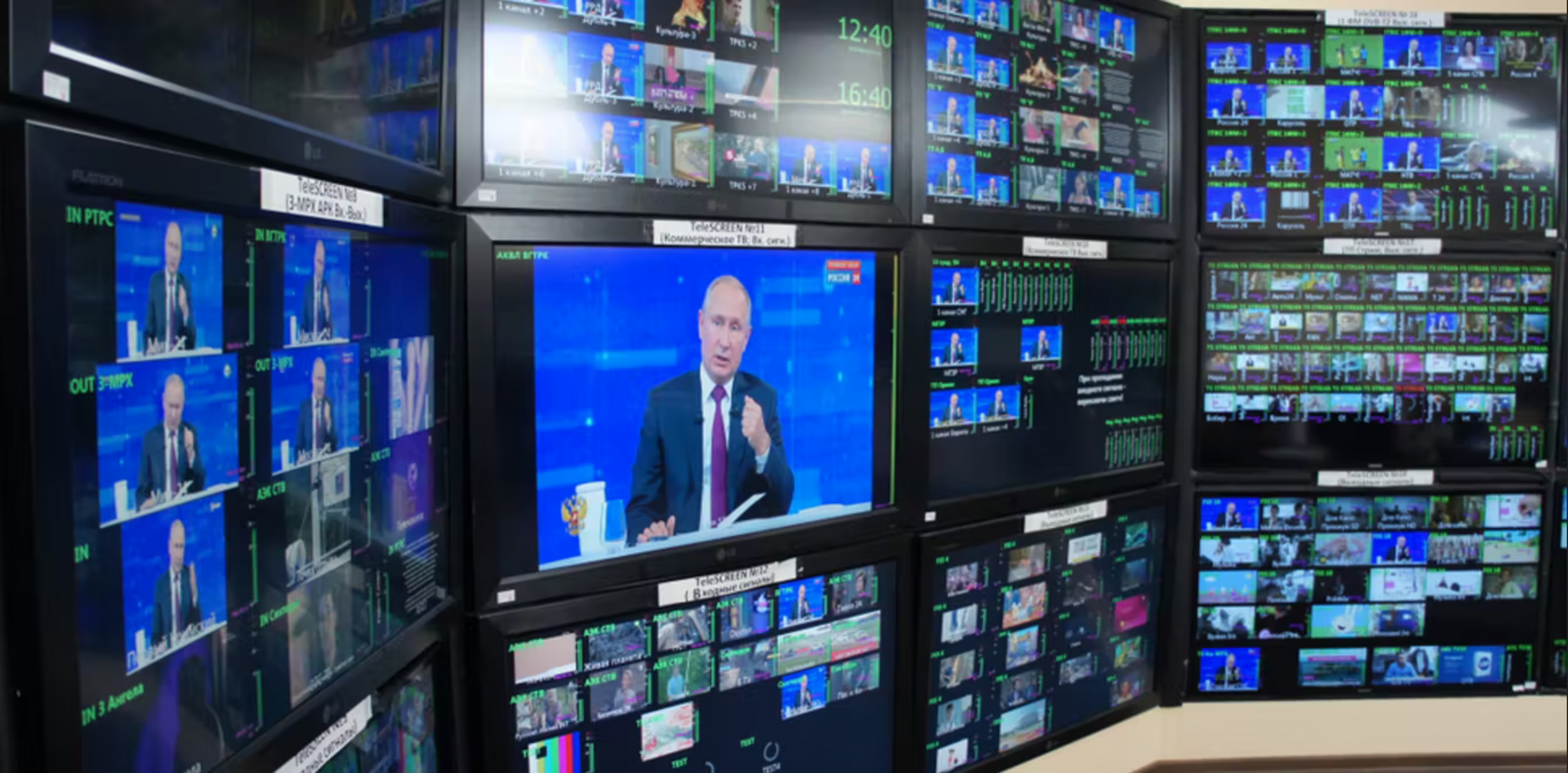 The Russian invasion of Ukraine has led to the death of civilians, destruction of lives and livelihoods, and displacement of millions of people. It has also attracted unprecedented media coverage, explains Dr Eva Połońska-Kimunguyi, a Research Fellow in the Department of Media and Communications. This article is based on her research project that explores political and media constructions of the war and highlights their contradictions, racism, and open hypocrisy.
The Russian invasion of Ukraine has led to the death of civilians, destruction of lives and livelihoods, and displacement of millions of people. It has also attracted unprecedented media coverage, explains Dr Eva Połońska-Kimunguyi, a Research Fellow in the Department of Media and Communications. This article is based on her research project that explores political and media constructions of the war and highlights their contradictions, racism, and open hypocrisy.
The distinct character of the coverage of the war in Ukraine suggests that whether the war is covered or not, whether civilian fighters are seen as heroes or suspects, whether refugees are deemed worthy or not, largely depends on the racial background of its subjects. Racism remains a dominant organising force of the global politics of war.
Wars of other people: do brown and black lives matter?
There was an initial confusion about the kind of words to describe the developments in Ukraine when the images of Russian tanks rolling into its territory emerged. The special military operation, a term promoted in Russia’s official narrative of the invasion, did not find traction amongst western media with global aspirations. The New York Times, for example, talked about tensions, the German broadcaster Deutsche Welle chose to inform on a war and the BBC spoke of a large military offensive. The Financial Times aimed at a bit of precision by calling it Putin’s war. The CNN reported on Russia early movements as an invasion, as did the French international broadcaster which talked about the Russian invasion from the start. Europe’s top officials condemned the Russian aggression and a hideous and barbaric venture of Vladimir Putin. Whatever the choice of words each outlet decided to use, news stories began pouring by the hundreds.
Other wars have been covered largely with a veil of silence. The war in Yemen, for example, has entered its eighth year. Over 400,000 people have been killed and almost four million have been displaced. Saudi Arabia and its coalition keep bombing and blocking the cities, depriving the people of food and medicine. Western countries keep supplying the weapons to Saudi Arabia and stay silent on the growing death toll. Global media have dedicated a handful of stories to this ‘catastrophe.’ The lives of the Somalis, Eritreans, Palestinians or Yemenis are seen as less newsworthy, their plight as undeserving of the audience’s attention.
The conflicts in Ethiopia, Syria, Somalia, Kashmir, Palestine, or Afghanistan also have not received the same level of media attention as the developments in Ukraine. Instead, most of the Western media has displayed a distinct lack of concern for people’s right to freedom, sovereignty, equality, justice, their right to have rights. This absence of coverage leaves their perpetrators off the hook, unaccountable for their atrocities and military occupation. To Tedros Adhanom Ghebreyesus, the Director-General of the World Health Organization (WHO), it is clear that the world ‘is not treating the human race the same way’ as he questions whether the world really gives equal attention to Black and white lives.
Protectors and Suspects
The coverage of resistance against Russia’s aggression in Ukraine has quickly become the main theme of the broadcasts. When Ukrainian civilians took up arms in an act of defence, western media have supported their right to resistance and sovereignty. They praised the digitally savvy public opposition for outwitting Russian invaders. They provided instructions about how to protect yourself against cyberattacks, as if media themselves were part of the war, preparing people for battle.
As Ukrainian civilians hurl Molotov cocktails at Russian tanks and produce self-made bombs, similar acts committed elsewhere are treated differently by the same media. Young Palestinians, for example, defending their homeland from their occupants, are better known as suspects who hurled Molotov cocktails at passing drivers, endangering their lives. That the arrests follow and death comes to teenage boys is reported as a fact of life in the West Bank, a natural way of dealing with a ‘terrorist cell,’ a term not afforded to Ukrainian civilians for their defence of their homeland. Media coverage of the Palestinians suffering does not condemn their oppressor in the same way the Ukrainian oppressor is denounced. Reporting on the Israeli ‘military operations’ in the West Bank bears a striking resemblance to the Russian terminology used to describe the Russian activities in Ukraine.
The supportive discourse of war and popular resistance offered by western media to Ukraine is missing from their representations of other wars and other acts of resistance. The sheer number of stories devoted to the struggle of Ukrainians leave other genocides, wars and ethnic cleansings underreported, silencing other peoples’ right to have rights.
Refugees as the ‘enemy’ of mankind vs. refugees as ‘us’
Previous discourses of forced migration in Europe turned refugees into a ‘threat’. Populist leaders led the discursive construction of Europe under siege. Examples include campaign posters with people of colour heading towards the white cliffs of Dover; the fear of Islamisation of the Netherlands and of the Muslim invasion threatening the Christian identity of the Hungarian nation. The discourse of ‘threat’ was picked up by the EU leadership. Jean-Claude Juncker, for example, the President of the EU Commission at the time of the 2015 ‘crisis’, saw refugees as frightening numbers and refused to ‘house all the misery of the world’ despite Europe’s imagined status of a ‘haven of stability.’ What he forgot to include in his address to the EU Parliament was how Europe was the cause of this misery, how Europeans and their American allies generated those migrants by their own invasions and occupations, and how the plunder of the Global South after independence by the ‘advanced economies’ from the Global North, including Europe, appropriated from the South commodities worth $2.2 trillion – enough to end extreme poverty 15 times over.
Media narratives of ‘migration’ followed suit. In the UK, reporting on the earlier ‘migration crisis’ saw refugees as the source of crime and violence. News pointed to rioting migrants in Greece, saw them as driving crime in Germany, and thematically connected migration to law and order, mostly illegality. The language of a migrant mayhem, employed by the media on the left, right and centre organised ‘migrants’ into boxes: their brown-ness, black-ness and Muslim-ness was connected to criminality and terror, their Eastern European-ness evoked the language of plantations that reduced humans to physical capacities to be put at the service of the British consumer. Overall, the racialised mix of knowledge produced by the media re-created the age-old hierarchies of the colonial system based on division amongst humans into superior and inferior species.
This collective production of culturally prejudiced knowledge by media and political discourses created refugees as Europe’s ‘enemy,’ and divided humans into ‘us’ and ‘them.’
The discursive exercise of turning refugees into threat is missing from narratives about Ukraine. The Bulgarian Prime Minister Kiril Petkov, for example, saw his fellow Easterners in a different light from previous ‘waves of migration’:
“These [Ukrainians] are not the refugees we are used to…These are our relatives, family. These are Europeans, intelligent, educated people, some of them are programmers. We, like everyone else, are ready to welcome them. This is not the usual refugee wave of people with an unclear past. None of the European countries is worried about them.”
The intellectual capacity of Eastern Europeans was less appreciated by the British immigration minister who rushed to turn the Ukrainian refugees into cheap labour to stock up on the (sub)human resources otherwise depleted by Brexit and Covid pandemic. Although the minister was forced to change his mind, and doors were opened to them, the Home Secretary worked out a plan to discard other asylum seekers to Africa, not too far from the place where her personal migrant journey began before dictator Idi Amin declared no room in Uganda for the country’s 80,000 Asians. Patel is now expelling others, especially the male ‘boat people’ of darker colours, that she thinks are less worthy of protection.
Other European countries that have long been advocating for stricter border controls and against admitting more refugees to the European Union rushed to open their borders to the Ukrainian refugees from day one of the war. This is not to criticise Europeans for their words and actions. On the contrary, the generosity of citizens, the wide-open hearts, homes and borders, as well as job offers, are all to be praised for solidarity and acts of kindness in the hour of need. The same warm welcome was not, however, extended to the refugees from Syria, Afghanistan, or Libya when walls were erected, ‘migrants’ pushed back, or left to die at the borders of the European nations. Hence, the current compassionate discourse, swift policy and immediate action reveal Europe’s double standards for non-white asylum seekers.
Media reporting has also been accused of different treatment of the Ukrainian refugees from the very beginning. CBS foreign correspondent saw Ukraine as ‘civilised’, not as:
“a place, with all due respect, like Iraq or Afghanistan, that has seen conflict raging for decades. This is a relatively civilized, relatively European – I have to choose those words carefully, too – city, one where you wouldn’t expect that, or hope that it’s going to happen.”
For a BBC reporter, it was very emotional ‘to see European people with blue eyes and blond hair … being killed every day.’
Ukrainians fleeing death and destruction are not seen as ‘migrants’ by the western media. They receive the rightful place as ‘refugees’ in the politics of war. They are not constructed as Europe’s enemy. They are seen as people, not a threat, caring for their homeland, families, and children. They have names, faces, and skills that can be useful to host countries. Most importantly, they have a voice that tells their personal stories. Media genuinely worry about their problems, safety and wellbeing, as citizens organise help. And here again, the affectionate headlines reveal double standards of some western media in their coverage of the war in Ukraine, a treatment not afforded to other people fleeing different wars and persecution.
Racism or what…
How do we explain the different treatment of various wars, resistance, and refugees by western media?
The first answer brings race and racism to the fore. Media are complicit in promoting how we see and think about occupation, resistance, refuge, of who’s worthy and who is not, of who deserves rights and who does not, from a specifically racial lens. Media have a role to play in the creation of race and racial divisions.
But there is another explanation that lies at the bottom of media’s perceptions, especially those in the West. Media are not independent or objective observers, as we are frequently told. They have strategic political objectives to drum up support for specific ideologies, a specific world order. They manufacture consent for the war if this world order is to be created or maintained through it. When the aggressor is Russia, the pronounced enemy of the liberal West, the media message generates anger at the atrocities committed, sympathy and solidarity towards the victims. When the liberal West drops bombs on Middle Eastern and African towns and populations, information silence descends on the media. This silence protects the occupiers and their allies and does not keep them accountable for their pursuit of death. Media are no mere observers whose job is to ‘report’ the objective world to their audiences. They are subjective co-creators of the shifting global order in a bigger game of geopolitics. This game continues to revolve around nationalism, its intrinsic violence that makes space for capital and is shaped around the colour line. Their audiences, imagined as made of playdough, are moulded, influenced, and manipulated to dance to the same tune. It is up to us to stop dancing.
This article gives the views of the author and does not represent the position of the Media@LSE blog, nor of the London School of Economics and Political Science.
Note on funding: This article is part of the research project on media and migration funded by Polish National Agency for Academic Exchange (NAWA) under the MAD Project PPI/APM/2018/1/00019.
Featured image: Photo by engin akyurt on Unsplash





